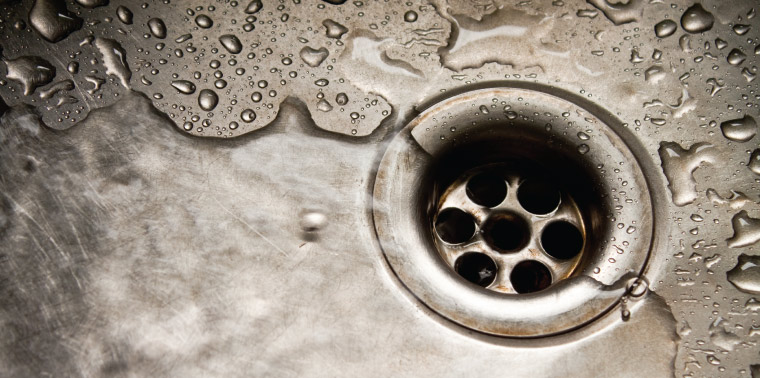March 14, 2013 — The next time you stop off at a pub for a quick bite, think about this: It took around 630 gallons of water to make your burger. Your pint of beer used around 20 gallons. Manufacturing your blue jeans and T-shirt drank up about 1,218 gallons of water: 505 and 713 gallons, respectively.
Total: Nearly 1,900 gallons of water—and that’s without fries on the side.
These quantities are the “water footprint” of each product: the total amount of freshwater used in its manufacture, including producing the ingredients. For many products, that footprint is Paul Bunyan–sized: With water seemingly cheap and plentiful, there has been little incentive to try to keep it small.
But today, that’s changing. Even though much of the water we use for growing food and making products is replenished by natural hydrological cycles, freshwater will be less reliable and available in the coming century. Population growth is increasing both demand for water and pollution of potable supplies. At the same time, climate change is disrupting historical precipitation patterns, shrinking freshwater sources such as glaciers and snowpack, and creating unprecedented droughts and floods.
According to an analysis published in Nature in September 2010, the freshwater supplies of most of the world’s population are at high risk.

wa•ter foot•print. The total volume of freshwater that is used to produce the goods and services consumed by the individual or community or produced by the business. ©ifong/Shutterstock.com
“If you look at the global distribution of people and the global distribution of threat levels to human water security, the places with the highly threatened water security represent about 80 percent of the world population, over 4 billion people,” says study co-author Peter McIntyre, assistant professor at the University of Wisconsin’s Center for Limnology.
In the United States, a 2010 analysis by the consulting firm Tetra Tech for the Natural Resources Defense Council found that more than 1,100 counties — some one-third of all counties in the lower 48 states — will contend with higher water risk by 2050 due to climate change alone. Fourteen states can expect extremely serious problems with freshwater supply, including Florida, Mississippi, New Mexico and California.
It’s not surprising, then, that businesses are increasingly considering their corporate water footprint. They encounter water risk — and opportunities to reduce it — at many stages of their operations, from growing crops to running retail stores. Factoring such risks into their present and future planning is helping companies present themselves as good environmental stewards to the public, and potentially reduce risks to their earnings from water scarcity.
“It’s often said that water is going to be the oil of the 21st century, in the sense of becoming an ever-more scarce commodity,” McIntyre says. “In the grand scheme of things, you can live without oil, but you can’t live without water. Water is fundamental for all life. And that’s certainly true for business as well.”
Blue Jean Surprise
Knowing the water footprint of goods and services can help businesses use water more efficiently (and work with suppliers to do the same), proactively protect water supplies and reduce vulnerability to changing water quality and quantity.
“There’s no doubt that this is a very important component of what companies are going to need in order to begin to evaluate their water-related risks and impacts,” says Jason Morrison, program director with the Pacific Institute, a California-based sustainability think tank. “You can’t ultimately manage what you don’t measure.”
According to the Water Footprint Network, producing one pound of cotton uses close to 1,500 gallons of water on average.
Take that pair of blue jeans: According to the Water Footprint Network, producing one pound of cotton uses close to 1,500 gallons of water on average: 45 percent in irrigation water from surface or ground supplies (known as “blue water”), 41 percent in rainwater stored in the soil (green water), and 14 percent used to dilute agricultural runoff, as well as chemical-laden wastewater from textile mills (grey water).
In 2007, clothing manufacturer Levi Strauss & Co. assessed the water footprint of a pair of jeans from production to disposal and found that each pair used about 925 gallons of water from cradle to grave. About 1 percent was used directly in the manufacturing process; more than 50 percent in the supply chain, including growing the cotton and selling the pants; and about 45 percent by the consumer to care for the jeans.
Levi Strauss has set targets for reducing water use at U.S. facilities. Focusing its water stewardship efforts on its supply chain, the company has established “global effluent requirements” covering water use, quality and reclamation for its factories and bulk fabric suppliers, and collects data on water use from its suppliers.
23 Gallons to the Pint
Beer production’s water consumption is also linked to its supply chain. Around 89 percent of the water needed to create a pint of brew is consumed in raising crops such as barley and hops. SABMiller, a global brewing company that owns nearly 200 brands (including Coors, Grolsch, Miller and Pilsner-Urquel), recently partnered with international conservation group WWF to produce the report Water Futures, an assessment of the company’s exposure to water risks in South Africa, Tanzania, Ukraine and Peru.
SABMiller found its Tanzania operations averaged nearly 23 gallons of water used for every pint of beer produced. South Africa’s pint of beer took 19 gallons of water to produce, while Peru and Ukraine used just 7.5 gallons of water to create a pint of brew.
In each country, 90 percent or more of the water footprint came from cultivating crops. But for countries with such divergent economies and environments, these amounts and percentages don’t tell the full story.
The 630 gallons of water it takes to produce one hamburger is no small matter, either.
Peru and Ukraine use substantial amounts of grey water in agriculture, for instance, while the footprints of South Africa and Tanzania are primarily green and blue water. In Ukraine, deteriorating infrastructure is a major risk to water supplies, while in Tanzania and Peru, population growth will present a challenge. South Africa’s brisk economic expansion means that different industries are increasingly vying for the same, relatively constrained water supply. All four countries face water pollution challenges, but in Ukraine a major factor is deteriorating infrastructure, while in Peru and Tanzania, it’s population growth.
The 630 gallons of water it takes to produce one hamburger is no small matter, either. Much of it is concentrated in growing grains as feed for cattle. “Holistic ranching” offers some solutions. Mimicking the natural behavior of bison, munching cattle are moved across open grasslands, letting some areas recover as others are grazed.

Just 0.3 percent — one third of 1 percent — of freshwater supply exists on the surface of the Earth as lakes (87 percent), wetlands (11 percent) and rivers (2 percent).
Free-range ranching can help restore grasslands and improve water conditions: The animals spread grass seed as they move, and grind it into the soil with their hooves. As the grasses and other vegetation grow, the roots help lock down water from rainfall so it ends up in the soil and groundwater rather than lost to runoff or evaporation. The catch: most grass-fed beef cows are sent to feedlots before slaughter to fatten up on water intensive grains. Further, federal subsidies keep the costs for corn feed low compared to free-range feeding.
To Label or Not to Label?
The U.S. Environmental Protection Agency’s Water Sense program allows toilets, showerheads and bathroom sink faucets that pass independent testing to display an official Water Sense label. The mark tells consumers the fixtures use less water than their noncertified counterparts, while delivering equally good performance.
Labeling products based on their cradle-to-grave water footprints would be problematic by comparison, says Morrison. His institute is part of the Alliance for Water Stewardship, an international coalition of environmental and sustainability groups working with public and private sector officials to develop science-based training and certification programs in water stewardship. Similar to the Forest Stewardship Council or the global Fair Trade movement, consumer products could qualify for “a good practice label and certification standard that allows companies that are good performers to differentiate themselves from others that might not be as good stewards of water resources.”
Morrison says he’s “deeply skeptical that you could actually come up with a product level claim that was meaningful and scientifically defensible.” Still, one has to start somewhere. Water footprints may help companies manage their water risk in the face of increasing scarcity — but only if they have an impact on how we all manage water.
“The sheer size of the global water challenge will require all sectors of society to do their part. So consumers, citizens, will have a role to play in this,” says Morrison. “Some of it will be through their personal behavior, the way that they use water at home, but it will also be about their choices, and the way they do with their purchases and dollars.”
A version of this article originally appeared in the Fall 2010 issue of Momentum magazine, Ensia’s predecessor, in which the proportion of U.S. counties expected to contend with higher water risk due to climate change was incorrect. The article was updated and corrected on 5.7.13 in response to a comment received (see below).
Ensia shares solutions-focused stories free of charge through our online magazine and partner media. That means audiences around the world have ready access to stories that can — and do — help them shape a better future. If you value our work, please show your support today.
Yes, I'll support Ensia!

I work at amee, which is collecting environmental data on every organisation in the UK. We have initially focused on carbon emissions but intend to include water data soon too.
As you pointed out, Levi is collecting data on their suppliers but this is a rare exception. amee wants environmental data for every company to be transparent and publicly available, which is why everything on our website is free.
By collecting and estimating water usage where appropriate we are trying to provide insight into companies' environmental impact. This will help supply chain owners make more informed decisions about which suppliers they should use to achieve their own sustainability targets.
https://www.amee.com/
There are 3,143 counties and equivalent areas in the U.S. with 29 in AK, 5 in HI. 1,100/3,109 = 35% not 66%.
Please check your facts before destroying credibility with shoddy math.